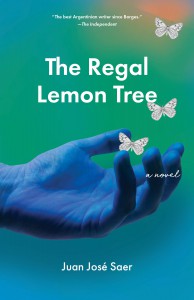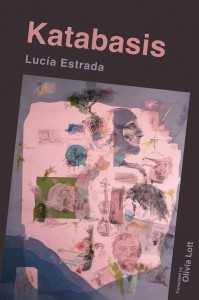In the shorter brightnesses of autumn, we bring you four sublime new translations from around the world to fill your days with their generous offerings of fantasy, mysticism, intrigue, depth, and good old excellent writing. From a radical, genre-defying text that blends the textual and the cinematic, to an Argentine novel that expertly wields dream logic, to lauded Japanese writer Hiroko Oyamada’s latest release, to the first ever volume of poetry from a Colombian woman to be published in English, we’ve got the expert guide to your next literary excursions.

Girls Against God by Jenny Hval, translated from the Norwegian by Marjam Idriss, Verso, 2020
Review by George MacBeth, Copy Editor
Unlike musicians, who often hear the same refrains sung back to them in crowds from Norway to Nizhny-Novgorod to Nottingham, writers can become disconnected from their corpus through the process of translation, often finding new markets and new readers for their early novels well into the mature phase of their authorship. Sometimes these multiple lives run in parallel, but more often than not, they’re discontinuous. Translated authors therefore begin to live out-of-sync with their work, jet-lagged as their oeuvre moves in transit across borders and between languages. This much is true of Jenny Hval, whose celebrated debut novella Paradise Rot was translated into English by Marjam Idriss in 2018, nine years after it was originally published in Norway. Now comes its highly anticipated successor Girls Without God, again translated from the Norwegian by Idriss.
Though mainly known for her eponymous musical output, comprising five studio albums and multiple collaborations (all in English), Jenny Hval originally studied creative writing in Melbourne and then in the Midwest, an experience of deracination (she originally hails from a small town in the south of Norway) that became the template for Paradise Rot. This book was a compost heap of bildungsroman, fantasy, horror, and queer love story—a peculiar, taut dreamwork that left residual stains in this reader’s memory. Its success lay in its distillation of a very particular ambience, the same oneiric mood conjured up by Hval’s music at its best (as on 2015’s Apocalypse, Girl): a dank warehouse filled with rotting fruit, sprouting mushrooms, and trashy novels; the estrangement of the Anglosphere’s soft food; the paradisical claustrophobia of a sudden and intense intimacy.
As Hval expressed in a discussion with Laura Snapes at the LRB bookshop in London, writing (rather than lyricism, or music) was her original aspiration—not so much because she felt she had any particular aptitude for it, but that, unlike the technological or instrumental expertise demanded by music, “it was unskilled. I could just do it.” This DIY ethos clearly informs the ambitious Girls Against God (whose title is itself drawn from a CocoRosie zine), which works over its themes in the same transgressive, intermedial groove as authors like Kathy Acker, Chris Kraus, and, more recently, Jarett Kobek’s invective “bad novel” I Hate the Internet. For this reason, the novel deliberately resists a simple synopsis. An unnamed narrator, who in many respects resembles Hval, is back in Oslo after a spell abroad, working on a film treatment that will channel the provincial hatred of her rebellious adolescence, the legacy of early Black Metal’s irruption against Norwegian petit-bourgeois society, and the desire of “Girls Against God” to sustain their rebellion against the heteronormative “Scandinavian reproduction blueprint” even when “our corpse paint has long since run from our cheeks.” Whilst working on her filmscript, she documents the formation of a sort-of witches’ coven with her bandmates, co-conspirators, and weird sisters Venke and Terese, with whom she engages in esoteric rituals and discussions about art, gender, and magic.
The looseness of this film-treatment form affords Hval a certain narrative flexibility, enabling her to chronologically “zoom outwards” between past and present, freely scramble locations and points of view, and cut up episodes and reflections at will. It also results in impasto storyboard sketches of B-movie scenes from the cutting room floor of her film, such as an antic food fight in a high school cafeteria featuring an Arcimboldo-style spaghetti monster (amongst other scatological scenes reminiscent of Věra Chytilová’s Daisies or Dušan Makavejev’s Sweet Movie [1974]). The effectiveness of the framing device is somewhat impaired, however, by the awkward apostrophized addresses to an unnamed “you,” one of many stylistic misnomers that give the impression of something still lingering in the text from an earlier draft (was this once an epistolary novel?).
The book has much of interest to say about the loneliness and pleasure of adolescent blasphemy, with totems of patriarchal Norwegian authority such as Knut Hamsun, Henrik Ibsen, Edvard Munch, and the Lutheran church singled out in the narrator’s crosshairs. Together such authorities collaborate to try and suppress the contagion presented by her younger self and her dyed-black misanthropy:
I’m so sick of being a soul that can be converted or improved or healed, or that’s dangerous and needs to be stopped from contaminating others. Give me a salvation break, I’m exhausted. I want to be in a place where I don’t have anything to hate.
Like an earlier generation of Black Metal icons who began to “use God’s property against him” (in Nick Richardson’s memorable phrase) through inverting crucifixes and staging photoshoots in graveyards, similar feats of transgressive appropriation occur here in the domain of art—as when the cowering young girl from Munch’s Puberty is imagined traveling through time to seek vengeance on her creator. Hamsun in particular is desecrated in numerous ways that, though entertaining, are likely less arresting to an Anglophone reader than a Norwegian, as Venke chews and swallows the pages of his Pan (“an insult to the brain”), and his mountainside Dikterstuen in Nørdholm is overtaken by the coven of Girls against God.
In its refusal of strict genre boundaries, and its concerted attempt to combine disparate modes and flavours of writing (memoir, literary fiction, cultural commentary, grimoire, music criticism, body horror, feminist polemic, social history, filmscript) into the same exciting dish—Girls Against God doesn’t so much resemble a witches’ cauldron as it does those suspended aspic sweet-n-savoury concoctions you can find documented in cookbooks of seventies party-food: luminescent “perfection salads” of immaculately diced meat, carrots, boiled eggs, sweetcorn, and whatever else you might have to hand suspended in the bevelled sheen of transparent gelatine. Much like these ingenious constructions, Hval’s novel continually risks lapsing into a sort-of gloopy formlessness. Then again, perhaps that is the point. As she declares in its fortissimo coda, “Aspic is our own man-made blasphemy . . . a voyeuristic fantasy, a fantasy about being able to see through structures, through matter. We see straight through the form and into the contents.”

The Regal Lemon Tree by Juan José Saer, translated from the Spanish by Sergio Waisman, Open Letter Books, 2020
Review by Jacqueline Leung, Editor-at-Large for Hong Kong
Released in Spanish in 1974, The Regal Lemon Tree has been lauded as one of the late Argentine writer Juan José Saer’s most complex and radical works. Its plot is simple: a family living in the countryside of northern Argentina gather to celebrate New Year’s Eve. Wenceslao, the novel’s aging protagonist, rows across the river to join his relatives while his wife, still silently mourning the loss of their son six years ago, refuses to leave the island where the two of them live. Throughout the novel, she remains unnamed (“ella”) and confines herself to their small house, separated from the rest of the island and its overgrowth by a wire fence. In their backyard, at the very center of the grove Wenceslao tends to, is a lemon tree said to be magical, for it is always fresh and in full bloom.
The story depicts an ordinary day in the lives of common folk, but the labyrinthine structure of its prose makes it riveting and powerful. In this sense, similarities can be drawn between it and James Joyce’s Ulysses. Clause builds upon clause to form a literature of accumulation, functioning rather like oil paint with layers of sensory and character information, which offer texture to the complexity of personal experience. The denseness of Saer’s prose also seems to convey the difficulty of portraying subjectivity through memories and the perceived passage of time. The phrase “dawn breaks / and his eyes are already open” recurs throughout the novel, foreboding and achronological, as Wenceslao indulges in reminiscence, obviously still affected by his son’s passing. Rather than just the events of the day, The Regal Lemon Tree brings up the totality of Wenceslao’s life, often delving into future tense to denote what awaits him:
Now he does not know who she is anymore. He looks at her dark face and does not quite recognize it. It seems to him that they have both changed, all of a sudden, and that they will need a long time to recognize each other again. Wenceslao does not know that for years to come he will be defeated by the influx of death, and that he will pass the hours of the day sitting under the Chinaberry tree, staring into space, while venomous plants and snakes take over his land . . .
The narrative develops from the third person to a dreamlike stream-of-consciousness sequence when Wenceslao dives into the river for a swim, at one point falling asleep; it then turns to his fate in the form of a fairytale. These shifts in voice are exemplary of Saer’s experimental style, which has established him as one of the major voices in twentieth-century Argentine literature. It is beautifully rendered into English by Sergio Waisman (also Ricardo Piglia’s long-time translator), who retains its poetic rhythm built largely on repetition and sound. For instance, he successfully recreates the alliteration and assonance present in the Spanish as Wenceslao dozes off—capturing how, as his consciousness fades, it unravels into noise:
Now I open my eyes again and see the lantern, but not the white butterflies. The very large black butterflies move about, ricking to the roof and the rall. Zddzzzzzzzzzz. Now everything blurs away again zdddzzzzzzzz. Everything blurred away. Nothing nonnied. Noning nonnied nenner nind neanny noned neinner. Nononny nonnified. Zac zac zaczac zddzzzz zddzzzzzz zac zac zddzzzzzzzz zaczaczac zddzzzzzzzz zzzzzzzzaaaac zzzaaaaaaaac Zddzzzzzzzzzz——————————————————————————————————————————————————————————————————————————————————————————————————————————————————————————————————————aaaaaaaaaaaa aaaa aa a a agth agth srkk srkk aaaa aaa agtth srk srk agth agth ark srik srik ay ay agth aaagth aaagth ay aay aaaaay
Life and death lie at the heart of The Regal Lemon Tree. There is, of course, Wenceslao’s late son, who was drafted for war and completed his military service in the city, soon becoming enamored with urban life—he decided to stay there afterwards, and eventually died in an accident while working a construction job. The tragedy is echoed in the highlight of the family gathering: the execution of a lamb, which is to serve as the barbecue’s main dish and a sacrifice in celebration of new beginnings. Death comes in many other metaphorical representations, such as rooster combs, worms, and the prominent interplay between light and shadow—all of which associate the end of life with nature’s cycles.
Life itself appears to be cyclical for Wenceslao—indeed, it follows the seasons: he tends to his crops and his yard, and his livelihood depends on his harvests. The darkness and grief that surround him, however, are constant. When he and his wife wake every morning, their house is enveloped in “a sphere of shade that protects them from the sunlight, as if in limbo,” a space where they cannot move on. His wife keeps sewing black bands onto their clothes, now faded with time, with no indication of when she will finish mourning her son. All the more unnatural then, the regal lemon tree: blooming and fragrant against their sadness, perennial in spite of the cycles that rule them. It doesn’t affect the plot so much as it provides contrast—a theatrical presence that will prevail long after all else is gone.

The Hole by Hiroko Oyamada, translated from the Japanese by David Boyd, New Directions, 2020
Review by Barbara Halla, Assistant Editor
Not too far into Hiroko Oyamada’s The Hole, the protagonist, twenty-nine-year-old Asahi Matsuura, begins to chase a peculiar animal, causing her to fall into a hole. The hole is not too deep, yet she struggles to get out of it, and the animal that led her there nowhere to be found. At this point I told myself that I had a proper grasp on what this book was “really” about—another straightforward reimaging of Alice in Wonderland; once Asahi managed to climb out of the hole, she would find herself in a strange, dangerous world populated by manic characters. But that doesn’t happen, Asahi is helped out of the hole by her next-door neighbor and once out, she resumes her trip to the local 7/11 to run an errand for her mother-in-law.
It all sounds so normal—mundane even—which is how the story starts: Asahi’s husband receives a job offer that would require them to relocate from the city to the rural town where he grew up. Asahi, a temporary worker, would have to give up her own job, which she does without many misgivings. The couple moves in to the house adjacent to Asahi’s in-laws, grateful for the opportunity to live rent-free and save up to start a family. However, while at first she faces her newfound idleness with indifference, it doesn’t take long for unemployment to warp Asahi’s sense of time and even of herself. The heat, the idleness, all make for a suffocating daily—and even reading—experience.
But even in the midst of so much normalcy, there are hints toward something unsettling happening underneath the surface. While Asahi had visited her husband’s childhood home previously, she could never remember there being another adjacent building; when they arrive, her mother-in-law doesn’t want Asahi to introduce herself to the neighbors; and her husband’s grandfather seems unable to hear or at least understand her, spending most of his day watering the family garden to the point of overflowing.
The Hole is a short book, but it kept pulling the rug out from under me. Right after Asahi’s fall and escape, I tempered my expectations, agreeing that perhaps this was going to be a conventional, slightly claustrophobic story dealing with the aftermath of a big life change, trying to find a place amidst strangers and meaning without work. But Oyamada is too clever a writer; she gives her readers clues—or better, she sets traps. Just as I had abandoned my Alice in Wonderland theory, Asahi comes across a strange man living in a tin house right in her backyard. The man introduces himself as her brother-in-law, the black sheep the family never even told her existed in the first place. He is the only person Asahi confides her story in full to, and he wastes no time in mocking her: “What kind of idiot falls into a hole? . . . Who do you think you are? Alice in Wonderland? You thought you’d follow a white rabbit down a hole and find yourself at the start of some big adventure?”
In this exchange, the brother-in-law casts himself as the potential rabbit, leading Asahi into the wonderlands that hide in this remote town, of which she can’t quite get a handle on. But rather than an accidental guide, he seems almost like an externalization of Asahi’s own conscience. While The Hole is told entirely in the first person from Asahi’s perspective, it is brother-in-law that challenges or brings to the surface interpretations and existential questions that Asahi seems to shake off, lest they make her too uncomfortable. As he tells Asahi:
It’s just, families are strange things, aren’t they? You have this couple: one man, one woman. A male and a female, if you will. They mate, and why? To leave children behind. And what are the children supposed to do? Turn around and do the whole thing over again? Well, what do you do when what you’ve got isn’t worth carrying on? The things people do for family.
The Hole is funny, disconcerting, and also enchanting. David Boyd’s translation is simple and precise, everything rendered in a realistic and matter-of-fact style at odds with the twist and turns of the story itself; in fact, it is this matter-of-factness that contributes to the sense of disconcertion. We expect fairytales to announce themselves to us, whether through language or plot, but Oyamada refuses to make her readers comfortable, to lead us to easy answers, or even questions. This makes The Hole not simply a joy to read, but a book I can’t wait to willingly fall back into.

Katabasis by Lucia Estrada, translated from the Spanish by Olivia Lott, Eulalia Books, 2020
Review by Georgina Fooks, Communications Manager
In Katabasis, the first full collection of poetry by a Colombian woman to be ever published in English, Lucía Estrada takes us on a journey of descent, grappling with language and meaning in their most raw and elemental forms.
Estrada is a vital and energetic voice in contemporary Colombian poetry; she has published ten collections and won various awards for her work—the Medellín Poetry Prize for one, and also the Bogotá Poetry Prize for Katabasis itself. It may seem surprising, then, that no full collection of hers has made it into English before—but, as translator Olivia Lott astutely notes in the foreword, this is only the second Colombian poetry collection to be published in the US in the past twenty years. While Colombian prose is much lauded in international literary communities, its poetry is disappointingly under-represented, in part because commercial interests favour easy, marketable narratives.
Lott notes that the little Colombian culture reaching Anglophone spheres often serves to sensationalise the violence of the ongoing conflict between government forces, cartels, and other armed groups. The other trend is to stamp Colombian narratives as magical realism, a reductive trope that has long haunted Latin American literature. The arrival of Estrada’s collection into English, then, is a cause for celebration; this is a volume that resists easy categorisation, a departure from colonialist or imperialist modes of looking at Colombian literature. It’s political not as a representation of Colombian politics, but in its refusal of the kind of delineation enforced onto it by a colonialist gaze.
This clearly aligns with Olivia Lott’s goal as she interprets these poems for an English-speaking audience; as she states, the reason she translates is ‘to use my position within the United States and my native tongue subversively.’ It’s this subversion of language that unites her intentions as a translator with Estrada’s lyrical explorations. After all, ‘subversive’ contains the root ‘sub,’ meaning ‘going under’—and the collection’s title, Katabasis, comes from the Greek for descent. This can range from the trivial—a journey downhill, or the setting sun—to the ultimate descent, down into the underworld.
Descent finds its twin in subversive dissent, a crucial theme that recurs throughout the collection. Estrada charts this katabatic journey through the three sections of her work: we begin at the surface, dig through the subsoil, and ultimately experience the final descent alongside the poetic voice, our companion on this metaphysical voyage.
From the outset, the speaker immerses us in an elemental world, tinged with the mythic: ‘Medusas’ simply means jellyfish, but the translator’s choice recalls the Greek mythology that katabasis also evokes. While this first section begins at the surface, the prospect of descent is immediately apparent:
I sense how the days come apart, how mistakes pick up altitude then plunge, detached, into nothingness.
There’s an oblivion associated with this plunge, a nothingness that escapes language:
How will you call to yourself amid the uproar if words, too, get lost in the blue horizon?
Words get lost and so do we as readers, adrift in this ‘baffled sea,’ and this idea of language, meaning—and even truth—getting lost is repeated in ‘Bees’:
I work tirelessly to follow the path of an unlikely truth. But also that thing. It refuses to be left on edge, waits for a sign, sets to work in me, waters down dark cartographies.
Water, darkness—there’s something raw, primordial, elemental about the images of Estrada’s poetry, following us as we fall through her verse. Her poetry is elemental both in its reference to nature and in its essentiality. We can picture the poet, toiling away, grasping tirelessly for meaning—but there’s an unnameable thing, ‘that thing,’ which obscures the poet’s quest for knowledge, watering down these ‘dark cartographies’ that would show the way to this unlikely truth. Yet even as we acknowledge that words may fail us, the poem asserts that this knowledge is not silencing:
Listen, something in this scream is for you
The middle section, ‘Sub Soil,’ sees Estrada encounter a new terrain: we leave oceans behind and descend into the labyrinth. Oblique echoes of the global geopolitical context abound in ‘From the Moment of This Reign’:
There will always be walls behind other walls, and beyond that, other walls scaling their peaks. Fake stories, too, and lessons, dark omens, signs
Estrada traces these walls in a series of poems named after Ariadne’s Labyrinth, the mythical lair of the minotaur, inciting in her reader as well the sense of clutching one’s way through the labyrinth, tangled up in this journey into darkness. ‘Barents Sea’ suggests progress on our journey:
We’ve made it to this point. The least possible, but most true. A mountain that we scaled the wrong way, patiently, beginning at our best days.
The poet alludes to the possibility of an ascent contained within descent, acknowledging the paradox she’s created. Descent might at first seem negative, but the poet points towards resilience in the strength of this first-person plural, this ‘we.’ It might not be an easy place, where we’ve arrived, but it’s ‘safe,’ it’s true. Crucially, it’s also free from language:
A bitter taste of moss where there once was language
The final act, ‘Final Descent,’ is almost dizzying—we gather speed as the poet hastens down the ‘stairs’ that name each poem. Lott keeps pace with Estrada and masterfully translates these last poems, matching the rhythms so that, as readers, we rush forward down winding sentences and then stumble on the short syntax. The final descent is a homecoming, but not an easy one. The destruction of language is complete:
Nothing to see. Not even words. Just a tired body and dark constellations trying to come together inside your head.
But just as this desolation, long awaited, comes to be, a sense of certainty or truth arrives alongside it:
Certainty is a deep root beneath our feet. It knots the unthinkable. Sometimes trembles, but lingers despite the lack of water, even with no sun.
There’s something to be said for rock bottom—the certainty it provides. Roots also form a crucial part of the poet’s vocabulary throughout, and their appearance here is crucial; it speaks to the possibility of growth, how all growth comes from the earth, from down below, from this dark place.
The ‘Last Stair’ marks the end of the descent for our poet:
Fighting against it, I ride on top of my head, then tumble wildly, over there where only exhausted arms live, mouth covered in salt, cruel oblivion of all languages, where words have no place.
But the end—of language, of our journey—is just the beginning; our poet is now a writer, the first time writing has been evoked in the collection. They write to give a shape to their death, even if writing is just a gravestone:
Something will be left on the page. A see-through star, a map of black holes, a scream added to the gluttony of other waters, other shadowed routings.
What is katabasis, then? A descent, an ascent. The destruction of language, the creation of a writer. The disappearance into oblivion, the discovery of truth. It’s both paradox and potential. And Estrada’s brilliant verse, in Lott’s sublime translation, shows how katabasis, for all its suggestions of darkness and destruction, is not just a way out, but a way through.
*****
Read more on the Asymptote blog:

